THESIS WORK features the work emerging from the Thesis Research & Design studios and seminars. Over the course of the TRD1 & TRD2 studios, graduate students develop their individual research topics in preparation for their thesis. The intention is to establish a theoretical, historical, and intellectual framework through a diversity of representational modes such as mapping, diagramming, photo essays, writing.
Art is the Metaphysics of Design | L’histoire dans une Boite
Instructor: Donald McKay
Project Description:
Build your intellectual history as a box — a curiosity cabinet — any size, any shape. The only constraints: no smaller than a cigar box, no larger than will pass with ease through a common doorway, and portable. The box examines your intellectual development: what matters to you; how you have come to the issues in life which interest you; how you want to go about addressing these issues; what intellectual kinships you have, what moral allegiances you owe, what creative models you choose for yourself — in a social, a political, a cultural, and a personal world.
The history is both the box, and what goes into it. The box embodies your intellectual autobiography, the story of the intellect you are developing, the intellect that will, in time, find its expression in a thesis.
Untitled | Matthew Barker
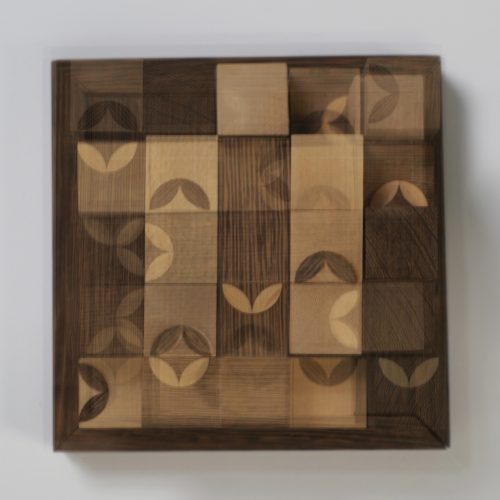
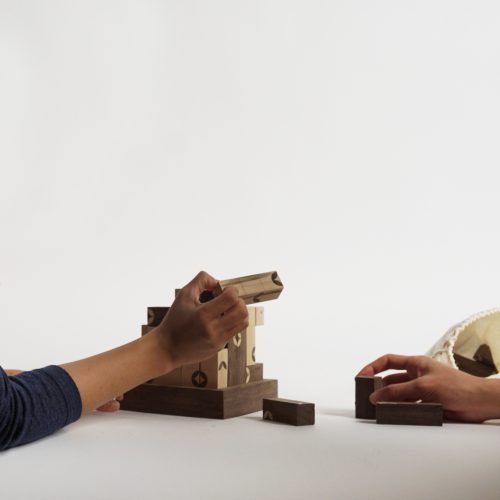
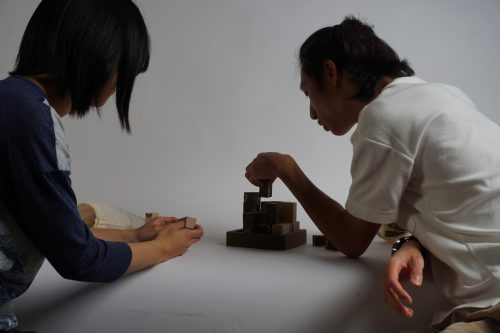
An intellectual autobiography as a box: I’ve made a game. I think rationally; I try to be very conscious of the effects of my actions and I’m actively thinking about their implication on my future. This way of thinking and focus required is present in game play as well as the process of making and testing one. It requires you to be fully attentive and highly rigorous, testing out all scenarios possible. In both cases, one is preparing for and trying to establish specific future outcomes. You’re building your own framework and the rules of the game. How this is a thesis: coming soon.
A Unit of Measurement | Jonas Chin
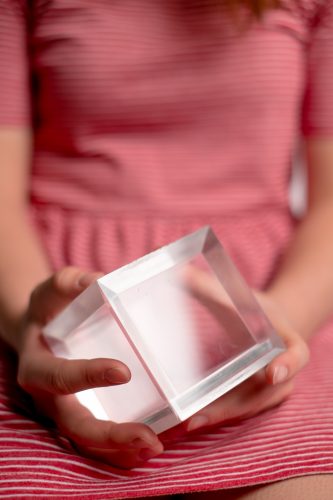
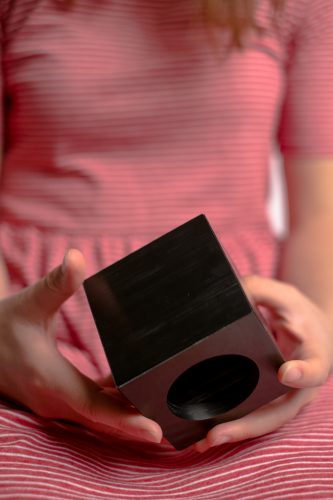
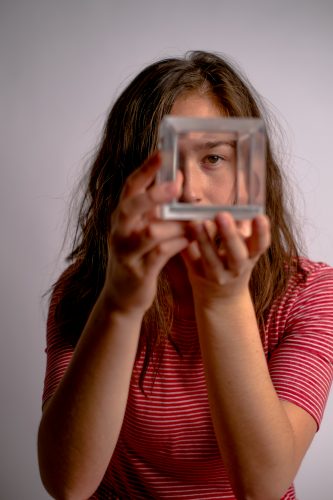
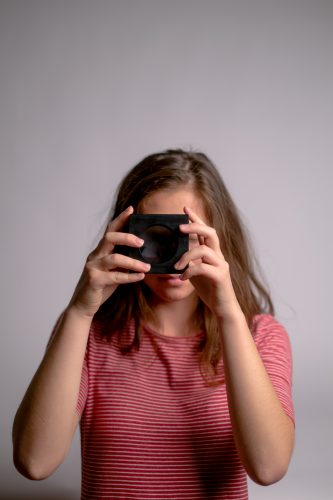
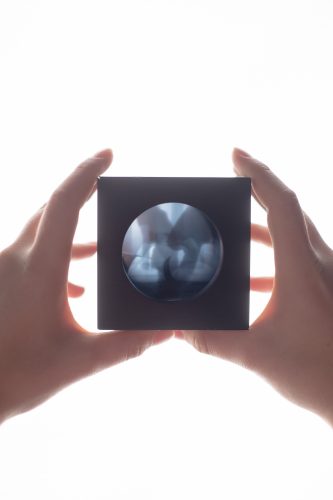
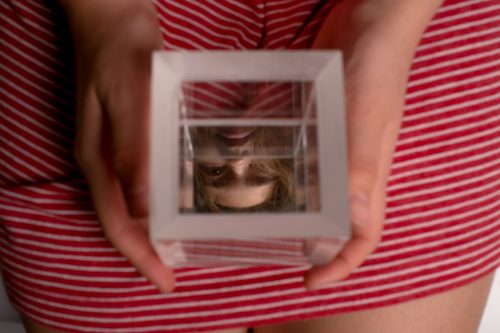
We map the space around us, with our eyes, our limbs, our skin. We feel claustrophobic when the walls are too close to us yet fear being exposed when all the elements are out of reach. How do we map the relationship between our body and the occupied space? By focusing on the idea of a person’s craft and the limitations of the body, the project is created using the human as a unit of measurement. Juxtaposed against elements of a space, we are now more than a soul contained within a shell.
Two cubes identical in size. The first cube is edgeless, transparent, solid. A mirror inside captures an image of the viewer within the spacial context. The second cube is black, frosted, hollow. Glass slides layered within present documentations of an unidentified body. The series of photographs are taken within the footprint of a room, and 12 frames being an expected yield from a roll of 120 film. It is a record of the geometry of the human body and how it overlays with the objects present in the same space.
Untitled | Victoria Ngai
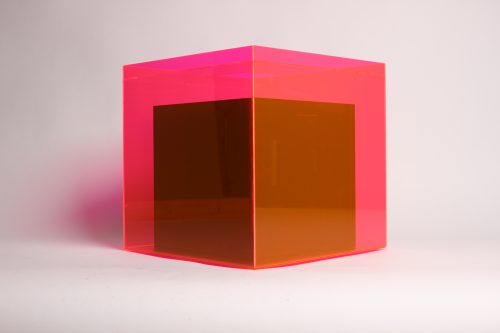
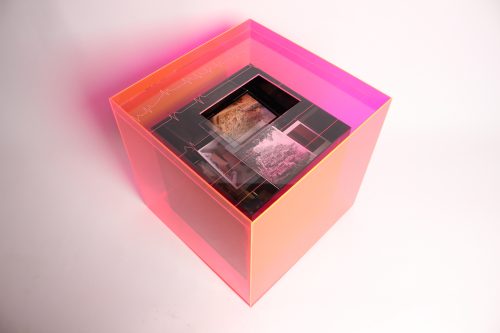
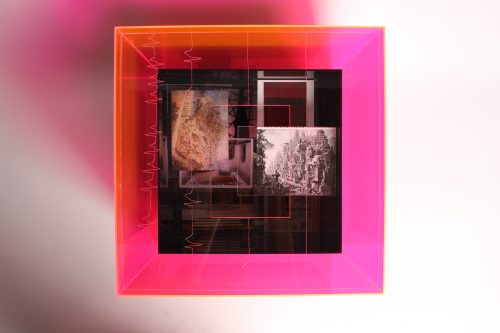
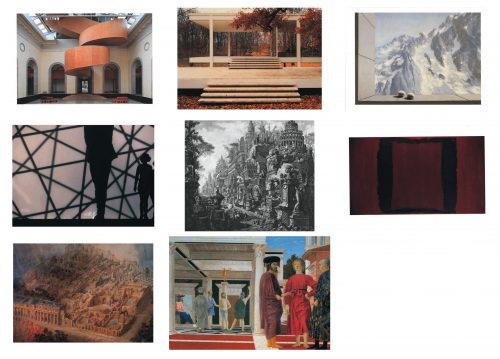
I have long held an affinity / tendency / compulsion to collect postcards of places or works that capture my imagination. As such, the collection of postcards I have amassed is a record of my intellectual development. Postcards transcend miniaturized reproduction – they invoke reflection through their tactility and format.
I constructed a curiosity cabinet in appreciation of my postcards and of the faculty of memory. The inward black box of memory holds postcards on varying tiers much like the impressions that continually surface and subside in one’s mind. The outer box of perception, activated with light and energy, imbues the impressions with context and meaning.
A void in the clear top, suggesting a missing postcard, marks the site of the thesis as the most current and foremost plane of occupation. This site, an etching of the moment of death, represents the tension between past and present, life and afterlife. It is the frame through which the postcards are understood.
The eight displayed postcards offer a meditation on life and death. Whether through Magritte’s depiction of eggs by a mountain, Rothko’s deep maroon tones, or the stoic lines of the Farnsworth house, these works present themes that have resonated with me intellectually, sensorially, and emotionally. The weight imparted upon me through my postcards, as well as by the development of my thesis, helps me to grasp my position relative to my mortality and thus to live a more meaningful, creative life.
Untitled | Shamir Panchal
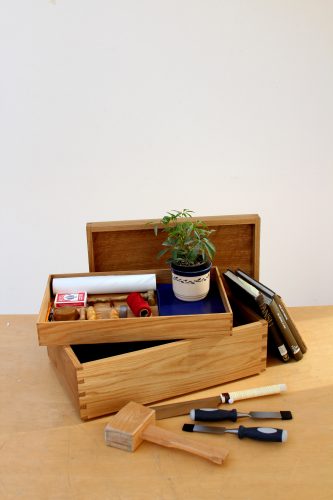
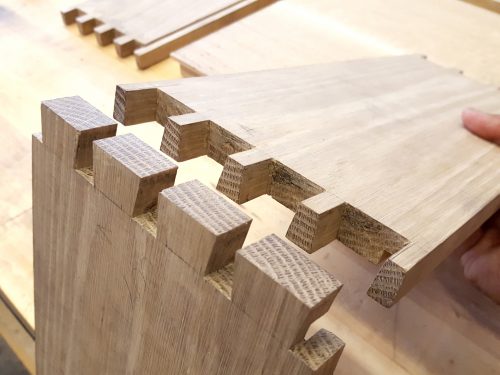
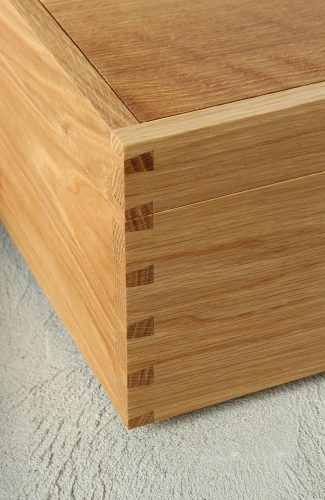
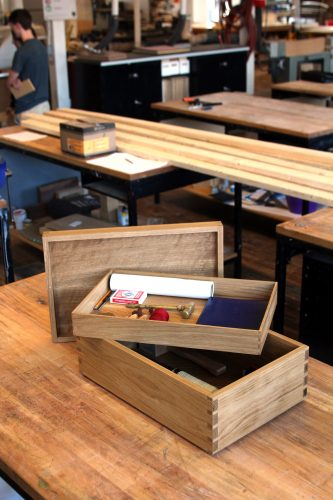
“In the spirit of the sailor’s chest, this is a compact and secure space for personal objects of importance. A portable case for essential objects. For me, these are the items which I use to learn through doing: my tools, my instruments, books and games. These are objects I come back to constantly and have used to develop certain skills and crafts through time, skills which I am proud of. The box is a reflection of some of these skills, evident in its design and craft. I want the box to be strong and durable, to last a long time and to age well. I want the box to both store objects and also act as a small piece of furniture, for sitting, working, and playing on.”
Untitled | Amanda Parkinson
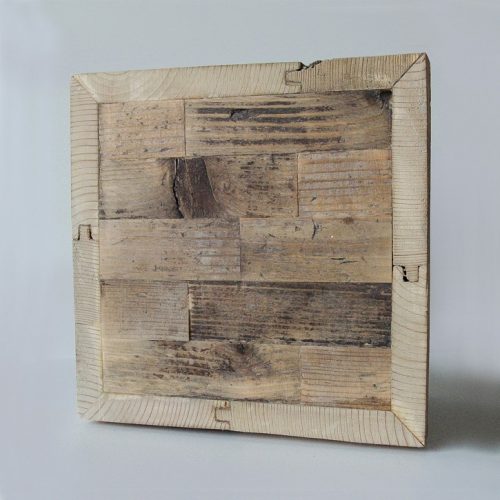
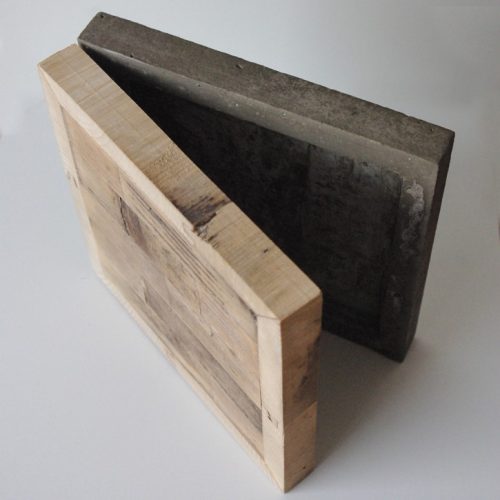
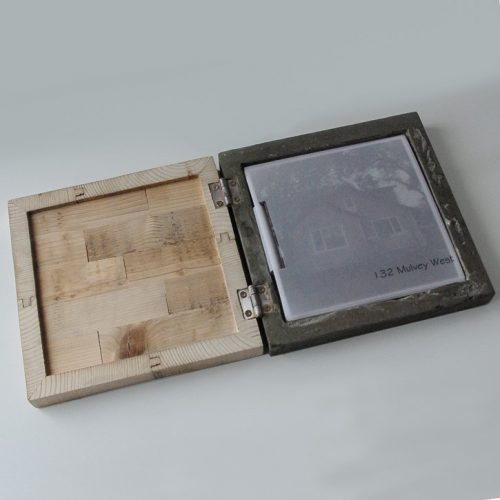
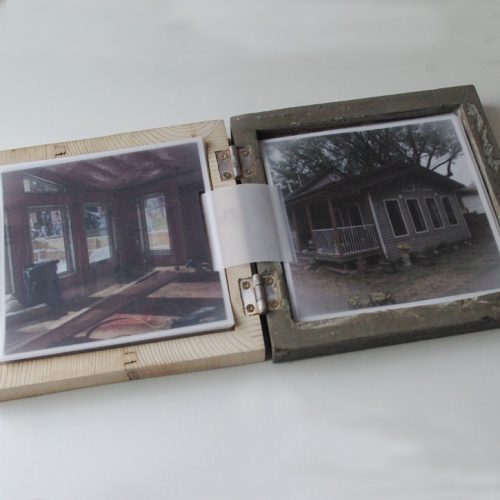
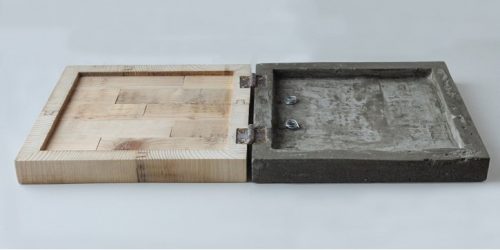
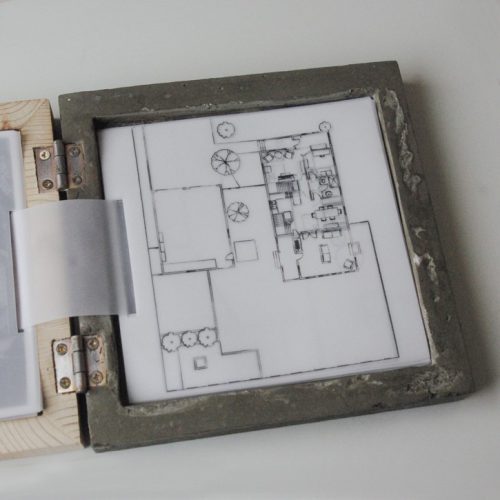
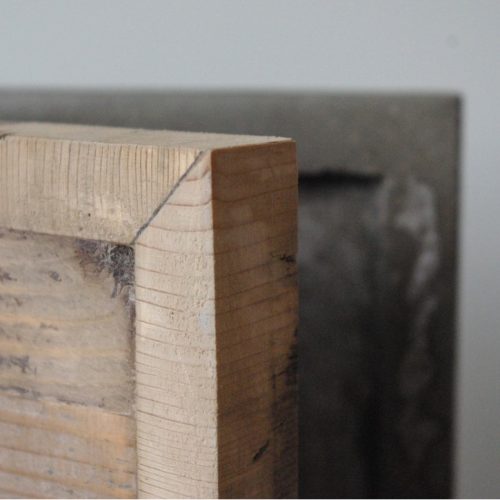
An intellectual history aims to understand ideas from the past by understanding them in context. In an examination of my intellectual development, I realized that the house I grew up in and it’s constant changing form has been a source of inspiration for my passion with architecture and my desire to design with these layers of history that have merged into what exists today. This is a documentation of my intellectual history in the form of a box – a box that embodies my intellectual autobiography, the story of the intellect I am developing – the intellect that will, in time, find its expression in a thesis.
Box | Bahman Shafiee
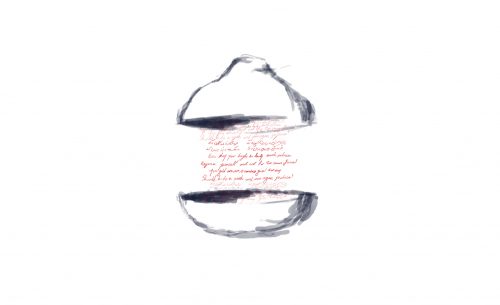
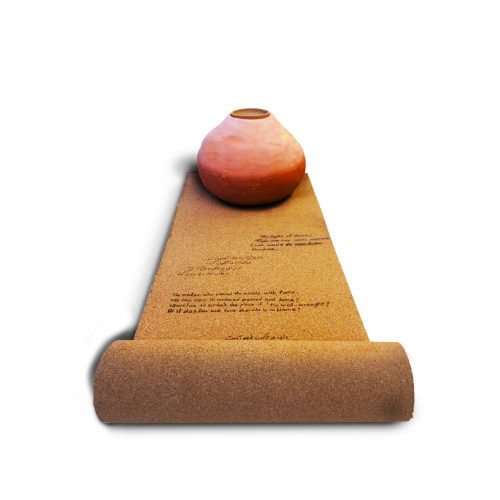
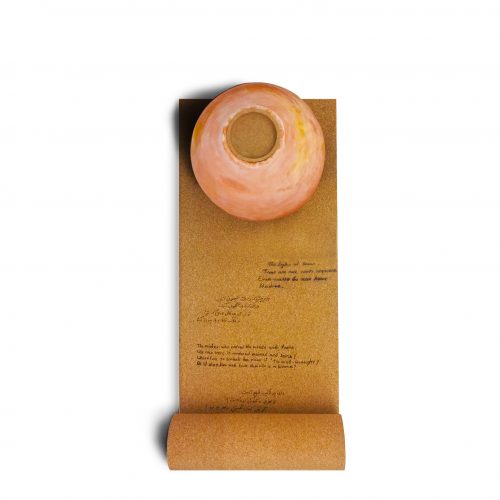
Creating the box, in this project, was done as an initial practice of creating a piece with the characteristics of a poem. A box which can keep things inside it and present them indirectly to the viewer. A box that does not offer any answers, yet suggests a lot.
The box is made of clay which allows liquid to pass through slowly and therefore create a wet surface in that area. However, the box is enclosed, which means there is no way to find an absolute answer to the question of what is inside it. Is it currently empty? Is there a liquid inside? Is it water? Is there any objects inside? The viewer has various clues but most of the clues are hidden and thus, an individual cannot find one answer for the questions.
The base of the box is a roll with a number of poems written on it. These are a number of poems which contain the aforesaid features. They construct questions which result in an individual to interpret and conclude a personal decision.
Containers of Palpable Thought | Joanne Yau
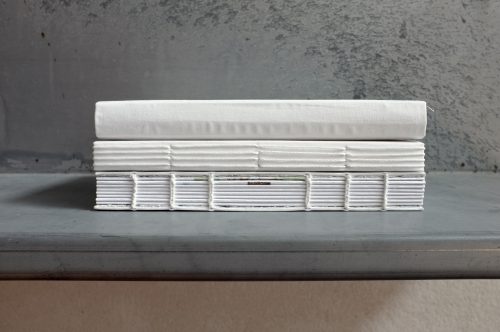

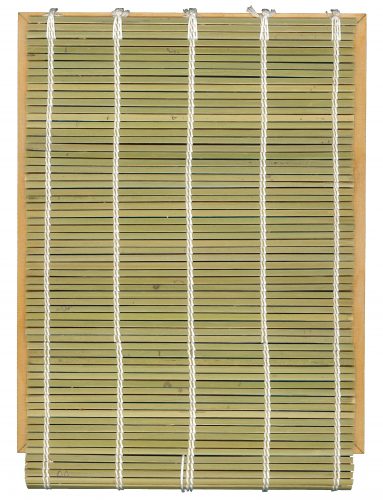
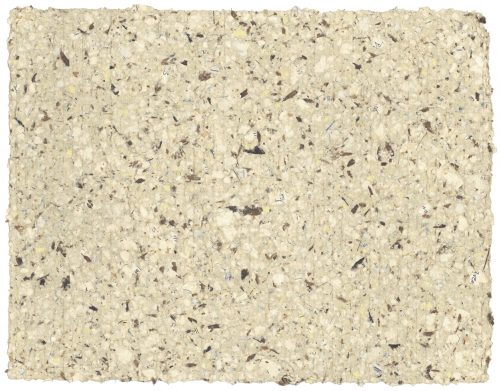
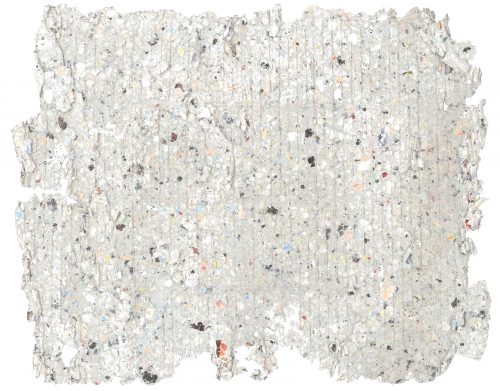
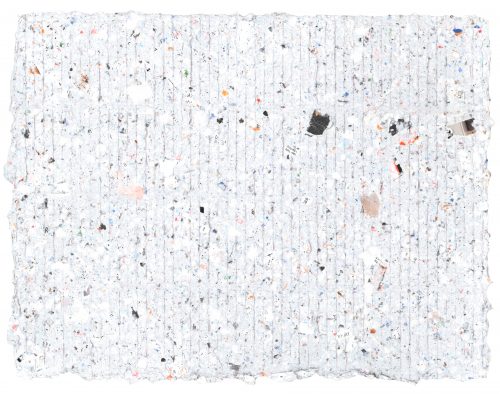
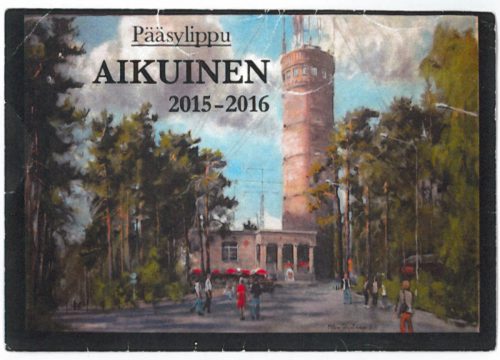
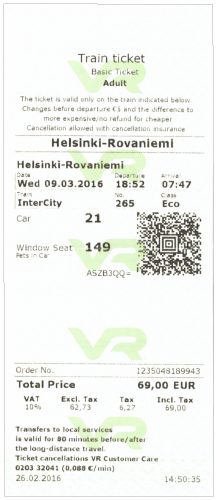
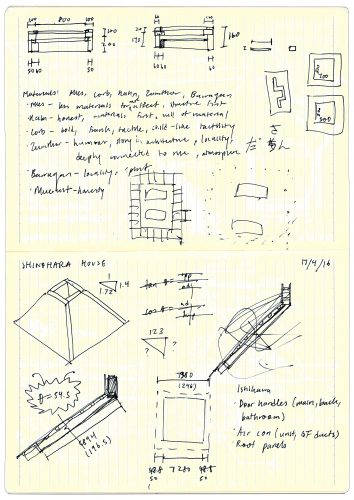
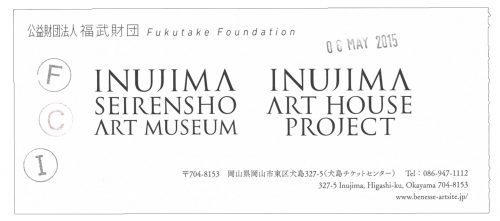
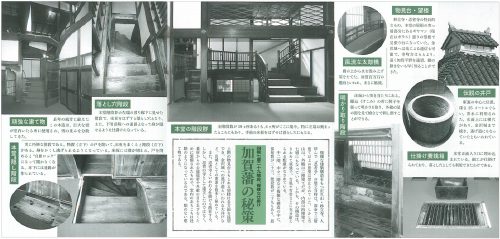
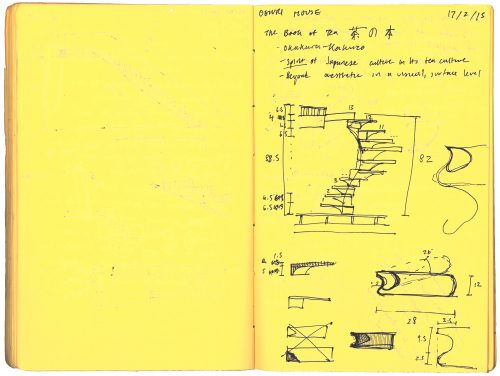
Here are collections of thoughts that I’ve noted and paper objects that I’ve accumulated over the years in the form of journal entries and collected items. They have been reconstituted and bound into the next three volumes in my existing series of personal notebooks. Catalogued in the beginning of each book is a record of the items and parts that have gone into the making of their respective books, including the tools that were used in the process of papermaking.
The endpapers in these three books are pulled from recycled materials in my personal collections. Each endpaper is embedded with reflections and observations of the things that inform my understanding of the world around me. They hold mundane to-do lists, sketches, travel plans, sermon notes, prayers, grievances and meditations from old journals. They also include maps, visitor’s guides, tickets and postcards of places I’ve been to that have been hoarded between the same journal pages.
In a sense, these notebooks are containers of my everyday routines and rituals. Embodied in the form of words, drawings, and memorabilia are glimpses of a worldview in its struggles and wonders in exploring people, places and events. It is in the way a person’s values are embodied in the objects of everyday routines and rituals that I would like to explore my thesis.
Tea Chest | Nathan Wang
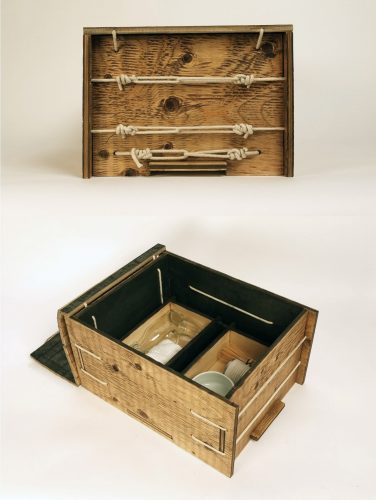
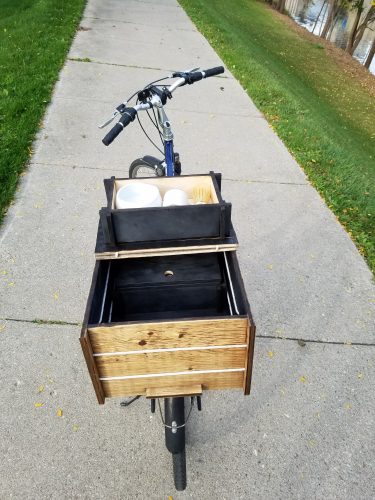
The ritual of tea engages a human participation in the world through the senses. The unique set of implements are made for interaction between hand and tea between body and environment. The curved spoon is made as a dextrous extension of the hand to measure and separate tea for steeping. The lightness of the bamboo whisk blends air into water. The warm energy of the tea travels through the clay vessel into the hands. All the bodily senses are engaged through the process. The sound of the implements in use, the aroma of uniquely roasted or dried tea leaves, the characteristic tastes of each successive brew, the haptic feed back in the motions of the ritual. Transactions between body, imagination and environment are made whole.
The tea chest is designed to be mounted to a bike and transported around various locations to engage in a new ritual of tea with others. Implements will be uniquely made, tea will be hand picked, locations will be mapped out and documented. The box will be a starting point and spring board for conversation. These social engagements are a step into exploring an architecture that engages with the senses in the process of belonging.
Jonas Chin is a M.Arch candidate at the University of Waterloo School of Architecture. He is currently the director of Bridge. His research is directed toward how architecture can facilitate a change in the way we dine


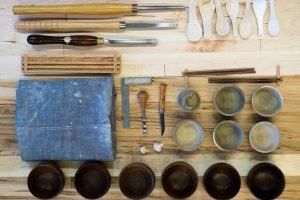
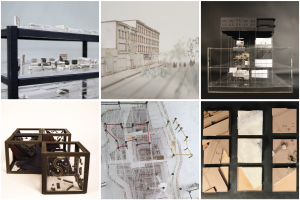
Leave a Reply